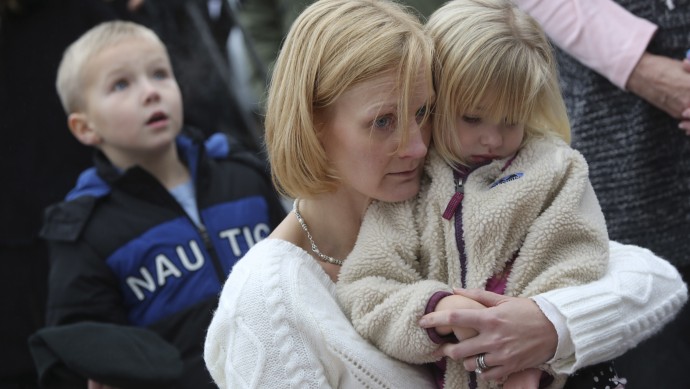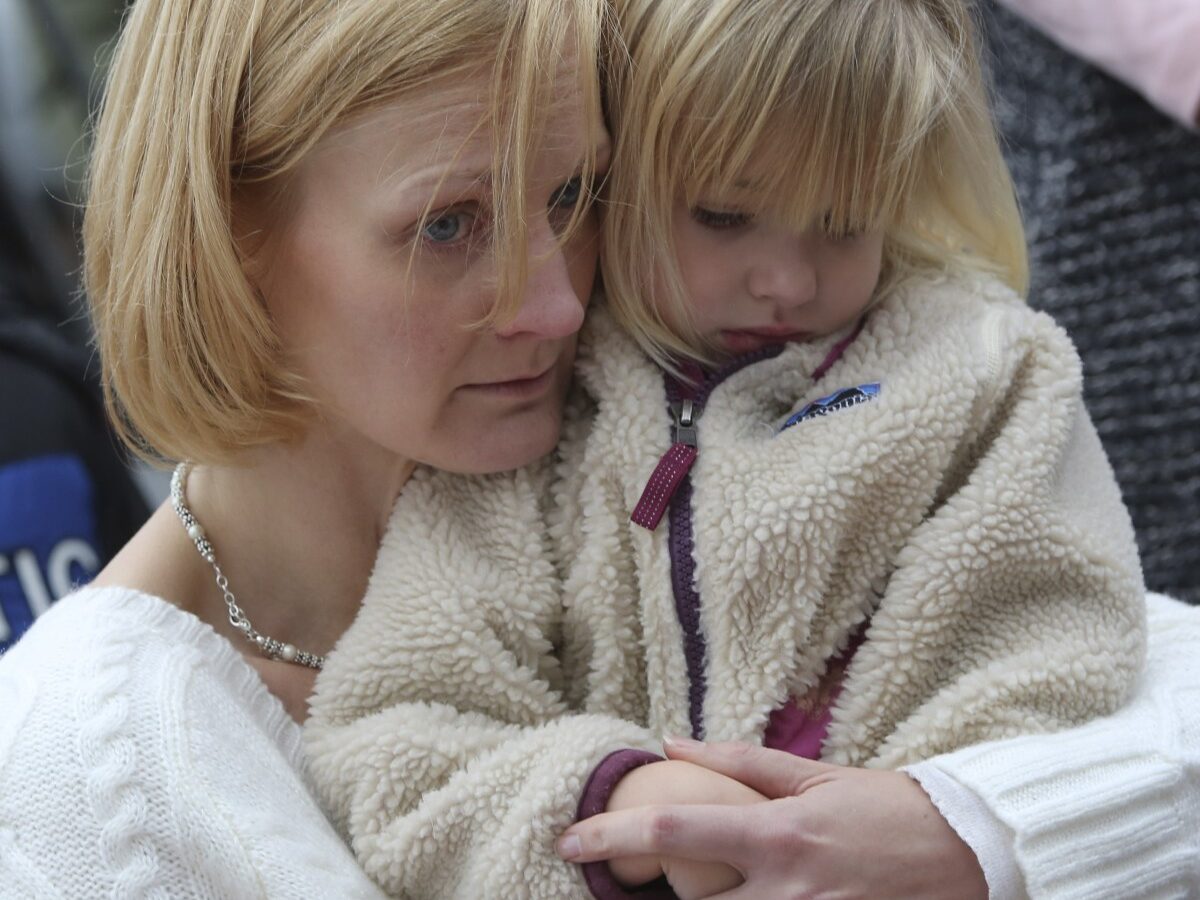
Since the Sandy Hook Elementary School tragedy in Newtown, Conn., last December, a single gun carries the weight of much more than a few pounds. In memory of the lives of 20 children and six educators lost in the mass shooting, issues revolving gun restrictions and gun rights have become the center of a national debate.
There have been 6,386 gun deaths since Newtown, according to online magazine Slate. This number is a rough estimate based on media reports. According to Slate, 60 percent of gun deaths are suicides, which are rarely reported, and it is likely over 18,000 deaths have occurred since Newtown, based on estimates from the Centers for Disease Control and Prevention.
In April, proposals to expand background checks and ban assault weapons and high-capacity magazines failed to get the 60 votes needed to pass the U.S. Senate. But that hasn’t prevented many states from creating their own gun policies. Political figures and advocacy organizations have vigorously debated the need for stricter gun laws or protection of Second Amendment rights.
With both sides of the debate expressing strong points of view, is it possible to reach a middle ground on such laws and their impact on fundamental freedoms?
Monte Frank, a Sandy Hook dad whose young daughter survived the attack, is an advocate for expanding background checks and limiting the types of firearms that can be owned by civilians. But he is also a supporter of American gun rights.
“I am pro 2nd Amendment. I cherish the Constitution. I value the freedoms afforded me by this great Nation,” he wrote in the Daily Kos. “And, I also believe that the Declaration of Independence’s granting of the unalienable right to life, liberty and the pursuit of happiness applies to the 1st graders at that elementary school down the road from me.”
The FBI defines a mass shooting as an incident that kills four people or more. From 2006 to the present, the death toll from mass shootings has exceeded 900, according to a USA Today analysis of FBI records.
“There are hundreds of people who die every year because of gun violence,” said Leroy Duncan, strategic initiatives coordinator and lead organizer at Protect Minnesota, “whether that’s suicide, homicide or accidental shootings.”
A national outburst
Like many states, Minnesota pushed for new gun restrictions in the wake of the Newtown incident, but New York was the first state to enact new gun safety legislation. Gov. Andrew Cuomo signed a law increasing sentences for certain gun crimes and expanding the number of guns that fall under under the state’s assault weapons ban. The new law also requires background checks on private gun sales and reduces the legal capacity of magazines from 10 bullets to seven.
But three fewer bullets may not prevent mass shootings altogether. Although the Sandy Hook shooter used a 30-round magazine, the shooters at Virginia Tech and Columbine High School used 10-round magazines. Extra ammunition was carried and then quickly reloaded.
Connecticut enacted new laws similar to those in New York, while also expanding background checks to gun-show sales, requiring current owners of high-capacity firearms to register them with the state, and widening mental health research and mental health training for teachers.
Colorado and California have also initiated safety laws, while other states expanded gun owners’ rights.
“One of our positions is we would either like to see more security or have teachers who are dutifully trained in firearms to have those at their access,” Eddie Eisler, a representative from Gun Owners of America, said.
Kansas expanded the types of public buildings where a gun can be carried, allowing educators to be armed in schools.
Advocacy groups have also been active. After the shooting, Frank, who is also legal counsel to the Newtown Action Alliance, organized Team 26 for the Sandy Hook Ride on Washington, a 375-mile bicycle rally from Sandy Hook to the nation’s capital.
Frank describes existing gun laws as a “patchwork,” saying state borders are “porous” to illegal gun trafficking.
“Is unfettered access to military style weapons, 30 round magazines, limited background checks and a weak trafficking law more important than reducing the risk of mass murder in your backyard?” he asks.
Other organizations wonder the same thing.
New York City Mayor Michael Bloomberg heads No More Names, a mobile project by his gun control advocacy group Mayors Against Illegal Guns. The project advocates strict but common-sense gun legislation by confronting members of Congress in 25 states over 100 days.
Former U.S. Rep. Gabrielle Giffords (D-Ariz.) heads the gun control advocacy group Americans for Responsible Solutions, which held its own mobile tour this summer, visiting seven states in seven days. Although Giffords was wounded in a Tucson, Ariz., shooting two years ago, the group supports Second Amendment rights even while promoting gun safety laws.
An unbalanced scale
Shelley Leeson, an organizer with Twin Cities Gun Owners and Carry Forum, is a citizen with a permit to own and carry a gun. She agrees with increasing penalties for gun criminals, as well as enforcing denials of the official background check form that is either accepted or denied by the National Instant Criminal Background Check System. But she does not favor new gun restrictions.
“There are so many things that can be done under current law, we don’t need more laws that criminals will not obey,” Leeson said.
Leeson believes that mass shootings can be discouraged by allowing more lawful citizens who pass the background check to carry guns.
The sight of average citizens carrying their handguns in public might make some feel threatened or fearful, but according to a study by two economists at the University of Chicago, “allowing citizens to carry concealed weapons deters violent crimes and it appears to produce no increase in accidental deaths.” If states without right-to-carry laws had adopted them in 1992, approximately 1,570 murders could have been prevented yearly, the study concluded.
However, other analysts have drawn opposite conclusions. A smaller analysis that appeared in The Atlantic in 2011 showed that firearm deaths are lower in states with stricter gun control legislation.
Currently, 35 states allow “open carry” without a permit, and rather than ban all gun owners from that right, Leeson believes the government should focus on prosecuting those who don’t pass the national background check.
“We shouldn’t base our laws on emotion, we should base it on common sense and logic,” Leeson said. “I understand and certainly feel sympathy and sorry for people who’ve been impacted by criminals who use guns, but people get confused with their emotion and try to blame law-abiding citizens.”
In 2010, the FBI conducted over 6 million background checks. About 73,000 applications were denied, making up about 1 percent of the total transactions. The most common reasons for denial were an applicant’s history of felony conviction or indictment, a misdemeanor domestic violence conviction, or a domestic violence restraining order.
Of those denials, only 62 cases were considered for prosecution. The most commonly investigated cases dealt with providing false information or the possession of a gun when under a felony conviction or domestic abuse charge.
Although the majority of transactions are cleared by the background check, some worry about those who slip through the cracks.
Adam Lanza, the 20-year-old shooter at Sandy Hook, obtained his weapons from his mother’s collection at home. At the Tucson, Ariz., shooting where Giffords was injured, shooter Jared Lee Loughner had passed the federal background check and legally purchased his pistol months before.
“I think the reality is this is not a problem that’s going to go away,” Duncan said. “Until we are serious about keeping deadly weapons out of the hands of our most vulnerable community members, which is the severely, mentally ill, or our kids … then the trend will continue.”
Although many groups and political figures will continue to advocate at national levels, Eisler feels states are sovereign and should be allowed to decide their own laws.
“There’s going to be a balance that has to be found at some point,” she says.
Frank recalls the gratitude he felt for his family’s safety, but that didn’t mean they were OK.
“Unfortunately, unless we take measures to reduce the risk of another mass shooting, this will continue to be a frequent, catastrophic and recurring event in America,” he said. “If it happened in sleepy Sandy Hook, it can happen anywhere.”


